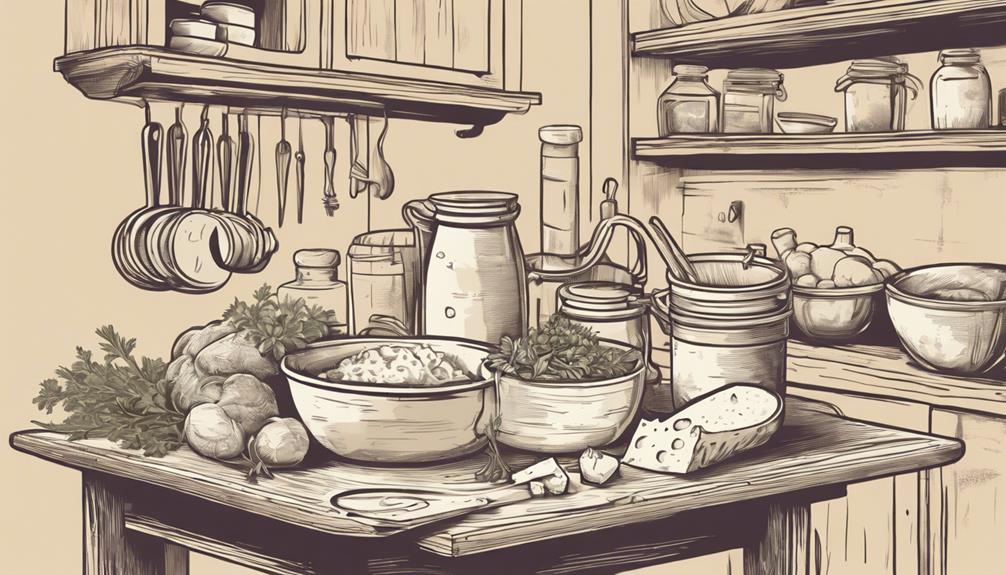How To Become More Self-Sufficient Without Starting a Full-Blown Farm…
Want to start preserving your harvest, making your own soap, or building a backyard root cellar — but not sure where to begin? “Homesteading Advice” gives you instant lifetime access to 35+ practical homesteading books on food preservation, veggie gardening, DIY natural cleaning products (save over $250 per year with this skill alone), brewing, off-grid energy, and a whole lot more…
Click Here To Check It Out Now!
“Hey, I recently started a small organic dairy farm in Vermont, USA, and I’m curious about the potential uses of colostrum. I’ve heard it mentioned before in passing, but I have no real knowledge of what it is or how it might be used in cheese making. Can you provide detailed insight into what colostrum is, its benefits, and whether it can be used for making cheese?” Thanks, John, Burlington, USA.
What’s Colostrum, And Can It Be Used For Cheese Making?
Hey John, I’m really excited about your new venture into organic dairy farming! You’re right; colostrum can often be a topic shrouded in mystery, especially for those new to the dairy industry. Let’s unriddle the enigma of colostrum and its potential in cheese making.
What is Colostrum?
Colostrum is the first form of milk produced immediately following the birth of a mammal’s offspring. Think of it as “nature’s superfood” for newborns, packed with antibodies, essential nutrients, and immune-boosting properties. It stands apart from regular milk due to its rich yellow color, thicker consistency, and higher levels of protein and fat.
The Benefits of Colostrum
Why is colostrum so special? Let’s dive into its benefits:
- High Nutrient Content: The nutrient density in colostrum is off the charts. It’s loaded with proteins, vitamins, minerals, and fats that are crucial for the newborn’s development.
- Immune Boosting: It contains high levels of immunoglobulins which are essentially antibodies that help in building a strong immune system.
- Rich in Growth Factors: Colostrum is packed with growth hormones and cytokines which promote healthy development and repair tissues.
- Gut Health: It aids in the development of the gut flora, which is critical for proper digestion and immunity.
Is Colostrum Suitable for Cheese Making?
This is the million-dollar question. Traditionally, colostrum is not widely used in commercial cheese making, primarily because its primary role is in nurturing the newborn. However, there are some unique cheeses that are made using colostrum, typically in smaller, household or artisanal settings.
Traditional Colostrum Cheeses
- Beestings: Known as “beestings cheese” or “moules,” this is a traditional product made from the first milking post-calving. It has a pudding-like texture.
- Junket: Though not a solid cheese, more of a dessert, junket made from colostrum has a rich, custard-like texture thanks to the high fat and protein content.
The Science Behind Using Colostrum in Cheese Making
Colostrum’s high protein and fat content can make it quite challenging to work with in cheese making. Here are a few points to consider:
- Clotting: Colostrum clots much more easily due to the high concentration of proteins, particularly caseins. This can lead to a thicker, richer curd.
- Flavor: The flavor profile can be different from traditional cheeses—often described as more intense or “farmy.”
- Texture: The resulting cheese can be significantly creamier and denser.
How to Use Colostrum for Cheese Making
If you’re keen to experiment with colostrum in your cheese making venture, here’s a basic rundown on what you might need to do:
- Collection: Collect the colostrum within the first few days postpartum. Note that after the first few milkings, its composition starts to resemble regular milk.
- Heating: Pasteurization is crucial for safety and extends the shelf life, just like with regular milk.
- Rennet Addition: Due to the high protein content, you may need to carefully monitor the amount of rennet used to curdle the milk.
- Curd Formation: The curds will form more rapidly and will be denser due to the richer composition of colostrum.
- Molding and Aging: After curd formation, you can mold the cheese and age it as desired. However, younger cheeses often fare better with colostrum.
Case Study: Colostrum Cheesemaking in Practice
Here’s a little example to put things in perspective. A fellow dairy farmer in Switzerland, Emma, experimented with colostrum cheese by mixing it with regular milk to stabilize the texture. This allowed her to craft a unique cheese that still had the creamy richness of colostrum but was easier to manage.
Potential Challenges
Using colostrum for cheese making isn’t without its challenges. Some of the main hurdles you might encounter include:
- Supply Limitation: Colostrum is only available right after calving, making it a rare ingredient.
- Safety Concerns: Ensuring that the colostrum is free from pathogens is crucial, which involves rigorous pasteurization.
- Consistency: Achieving a consistent product can be difficult due to the variability in colostrum composition.
- Flavor Profile: The unique flavor might not be to everyone’s taste, making it a niche product.
Conclusion: Is it Worth the Effort?
Experimenting with colostrum in cheese making can be a rewarding experience, offering a unique product that stands out. However, it does require careful handling and a bit of adventurous spirit. You might find that blending colostrum with regular milk, as Emma did, provides a more stable product while still maintaining some of the unique flavors and textures that colostrum offers.
Final Thoughts…
Thanks for your question, John. To wrap things up, colostrum holds significant potential beyond its primary use in nurturing newborns. It can indeed be used for making unique cheeses, though it comes with its set of challenges. If you’re up for some experimentation, colostrum could be an invaluable addition to your cheese-making repertoire. Appreciate you sending in your inquiry, and best of luck with your dairy farm in Vermont!

